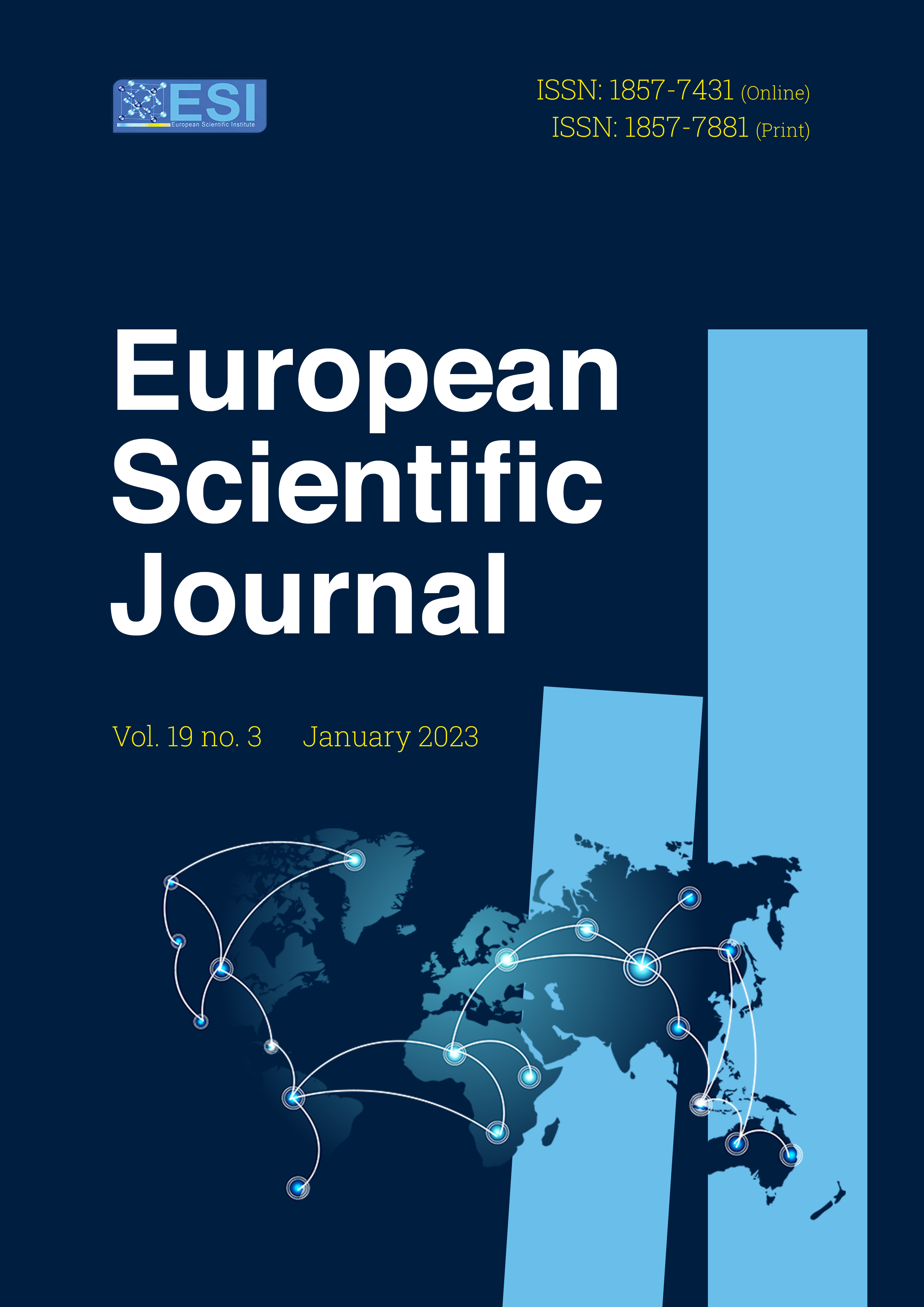Perforations Tympaniques: Aspects Epidemiologiques et Etiologiques en Orl au Centre Hospitalier Universitaire Sylvanus Olympio de Lome au Togo
Abstract
Objectif : décrire les aspects épidémiologiques et étiologiques des perforations tympaniques. Patients et Méthode: Il s’est agi d’une étude rétrospective descriptive des perforations de la membrane tympanique au service d’ORL du centre hospitalier universitaire Sylvanus Olympio de Lomé allant du 1er Janvier 2021 au 31 Mai 2022. Etaient inclus tous les dossiers des patients dont la plainte ou l’une des plaintes se rapportait à l’oreille, avec entre autres, une perforation tympanique à l’examen otoscopique. Les données ont été traitées et analysées par le logiciel SPSS 28.0. Résultats : 153 dossiers ont répondu aux critères d’étude. L’âge moyen des patients était de 29 ans avec une étendue de la variable de 9 mois à 83 ans. Le sexe masculin a été rapporté dans 79 cas avec un sex-ratio de 1,1. Les patients exerçant une fonction libérale représentaient 34% des cas. Le motif de consultation était une otorrhée purulente dans 40,5% des cas. L’otoscopie avait montré une perforation unilatérale dans 83,7% des c as dont 43,8% des cas à droite. Cette perforation était non marginale dans 79,2% des cas et non ponctiforme dans 56,7% des cas. Les perforations étaient dues à l’otite moyenne aigue dans 51% des cas, à l’otite moyenne chronique suppurée simple dans 24,2% des cas et aux traumatismes dans 22,8% des cas. Conclusion: la perforation tympanique est souvent due à l’otite moyenne aigue chez les patients jeunes consultant pour une otorrhée purulente dans le contexte d’exercice des auteurs.
Objective: To describe the epidemiological and etiological aspects of tympanic perforations. Method: A descriptive retrospective study of perforations of the tympanic membrane presenting in the ENT department of the Sylvanus Olympio university hospital in Lomé from January 1, 2021 to May 31, 2022. All records patients whose chief complaint or one of the complaints was ear related including a tympanic perforation on otoscopic examination, were considered and included in the data collection. Data was processed and analyzed using SPSS 28.0. Results: 153 files met the study criteria. The average age of patients was 29 years old with a variable range between 9 months 83 years. The male gender was reported in 79 cases with a sex ratio of 1.1. Patients exercising a liberal profession represented 34% of cases. The main reason for consultation was purulent otorrhea in 40.5% of cases. Otoscopy had shown a unilateral perforation in 83.7% of cases including 43.8% of cases on the right ear. This perforation was non-marginal in 79.2% of cases and irregular in 56.7% of cases. Perforations were following acute otitis media in 51% of the cases, simple chronic suppurative otitis media in 24.2% of the cases and traumatic injury in 22.8% of the cases. Conclusion: Tympanic perforation is often due to acute otitis media, particulary in young patients.
Downloads
Metrics
PlumX Statistics
References
2. Acuin J. (2004). Child and adolescent health and development prevention of blindness and deafness. Geneva World Health Organ ; 6-22.
3. Kulduk E, Dundar R, Soy FK, Guler OK, Yukkaldiran A, Iynen I, Bozkus F. (2015). Treatment of Large Tympanic Membrane Perforations: Medial to Malleus Versus Lateral to Malleus. Indian J Otolaryngol Head Neck Surg ; 67(2):173-9.
4. Aslıer M, Özay H, Gürkan S, Kırkım G, Güneri EA. (2019). The Effect of Tympanic Membrane Perforation Site, Size and Middle Ear Volume on Hearing Loss. Turk Arch Otorhinolaryngol ; 57:86-90.
5. Sogebi OA, Oyewole EA, Mabifah TO. (2018). Traumatic tympanic membrane perforations: characteristics and factors affecting outcome. Ghana Med J ; 52(1):34-40.
6. Tall A, N'diaya M, Diom ES, Nao EE, Deguenonvo RED, Diouf R. (2012). Myringoplastie par la technique des boutonnières. JORL ; 28(6) : 7-11.
7. Rana AK, Upadhyay D, Yadav A, Prasad S. (2020). Correlation of Tympanic Membrane Perforation with Hearing Loss and Its Parameters in Chronic Otitis Media: An Analytical Study. Indian J Otolaryngol Head Neck Surg ; 72(2):187-93.
8. Shrikrishna BH, Jyothi AC, Sanjay G, Samson SG. (2013). Age and gender differences in the incidence eof non-cholesteatomatous chronic suppurative otitis media. Int J Res Pharma Biomed Sci ; 4(4):1172–4.
9. Maalej F, Kallel S, Chaabouni MA, Hammami B, Charfeddine I, Ghorbel A. (2018). Rapport entre le siège et la taille de la perforation tympanique et la perte auditive dans les otites moyennes chroniques simples. J. TUN ORL ; 40(5): 7-11.
10. Shoman NM. (2019). (Clinical and audiometric outcomes of palisade cartilage myringoplastie under local anesthetic in an office setting). Am J Otolaryngol; 40(4): 482–6.
11. Olowookere SA, Ibekwe TS, Adeosun AA. (2008). Pattern of tympanic membrane perforation in ibadan: a retrospective study. Ann Ib Postgrad Med; 6(2):31-3.
12. Avnstorp MB, Homoe P, Bjerregaard P, Jensen RG. (2016). Otite moyenne suppurative chronique, pathologie de l’oreille moyenne et perte auditive correspondante chez une cohorte d’enfants groenlandais. Int J Pediatr Otorhinolaryngol. 83(6):148-53.
13. Bayram A, Bayar Muluk N, Cingi C, Bafaqeeh SA. Success rates for various graft materials in tympanoplasty. (2020). A review. J Otol ;15(3):107 11.
14. Yegin Y., Celik M., Koc AK, Küfeciler L., Elbistanlı MS, Kayhan FT. (2016). Comparison of temporalis fascia muscle and full-thickness cartilage grafts in type 1 pediatric tympanoplasties. Braz J Otorhinolaryngol; 82 : 695–701
Copyright (c) 2023 Foma Winga, Amana Essobiziou, Reoulembaye Djim Hervey, Ananidjin Gérémie, Boko Uziel, Amana Bathokédéou

This work is licensed under a Creative Commons Attribution-NonCommercial-NoDerivatives 4.0 International License.








